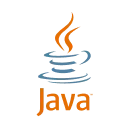This final a part of the group building course of grants teammates closure and provides an opportunity to mirror on the expertise. Team improvement is how teams come collectively and manage themselves to meet their objectives. The 5 stages of staff growth define how group dynamics shift as work progresses and outline a path ahead for leaders to support their staff. Review the 5 phases and our tips on fostering collaboration outlined in this article to deliver out the best in your team during each part. Better but, use a collaborative meeting software like Fellow to build a healthy group culture and organize your greatest ideas into actionable steps. Teammates move beyond the introductory forming stage and start putting plans into motion.
The performing stage provides the perfect opportunity to verify in with each worker to work by way of roadblocks, give feedback, and talk about individual progress. At this stage, leaders ought to communicate regularly with each staff member to make sure expectations are clear and to avoid slowing down their progress. During one-on-one conferences, decide what assets staff need to work efficiently and equip them with the necessary tools.

The internal competitions prevalent on the storming stage have been rooted out. As a outcome, the team works more efficiently as a end result of members perceive what’s anticipated of them and know tips on how to share their concepts and seek feedback. During the primary assembly, group members also be taught their roles and what’s expected of them as they work in the path of attaining the shared aim. Ground guidelines that can govern the group get outlined on the forming stage. Team leaders need to facilitate introductions and highlight every member’s background and abilities.
At this stage, leaders should aim to refocus the team’s long-term imaginative and prescient, break down objectives into smaller motion gadgets, and help staff work through any disappointment they’re experiencing. The group meets and learns in regards to the opportunities and challenges, and then four stages of team building agrees on goals and begins to sort out the tasks. They could additionally be motivated but are normally comparatively uninformed of the issues and aims of the staff. Team members are normally on their greatest behavior but very targeted on themselves.
Performing Stage
The success of your team growth efforts depends on the instruments you utilize. You need to put cash into instruments that improve team improvement conferences, workshops, and coaching. The efficiency-obsessed virtual meeting tool is designed to foster a tradition of connection in your groups. It permits you to enjoy a seamless workflow that enhances your team’s productivity. Thankfully, you’ll have the ability to deploy some methods to make sure your team navigates the levels with out issues. For occasion, outlining the team’s function and mission at the forming stage and retaliating throughout subsequent phases ensures nobody loses sight of the widespread objective.
When you do find a good solution or course of to help resolve troublesome situations, make positive you document those instantly. The team can consult this record when future issues come up and make diversifications as wanted. Your groups will soon be taught that battle is to not be feared, and that they have the instruments to discover a productive compromise. On their half, members should discover methods to organize their responsibilities. Conflicts are usually minimal since members are too newly acquainted to have any. Getting everyone on the same wavelength sounds simple on paper, however that just isn’t the case.
No member of the team shall be afraid to ask questions, raise concerns, or suggest new methods of performing duties. Team members often play to their strengths and help each other out, thereby enhancing teamwork and cohesion in your group. Bottlenecks get addressed promptly and with objective for the explanation that group can easily collaborate and create the options required to get everybody back on monitor. Challenges have a minimal impact on group performance and morale because members have methods for resolving them with out compromising project timelines and progress.
That can solely happen if a strong basis gets laid and communication channels are stored open. During the forming stage, group members are sometimes optimistic and captivated with getting started. The apprehensive conduct usually arises as a result of members are unsure concerning the project goals and their roles. However, as soon as that’s explained, they’re going to regulate to the roles that await them.
These tools enable environment friendly communication, coordination, and collaboration amongst staff members, no matter their bodily location. In this preliminary stage, group members are introduced to one another and focus on attending to know each other. There is a way of excitement and politeness within the group, but in addition some uncertainty and anxiety. Roles and duties are not well-defined, and team members could rely heavily on the team leader for steering.
All Plans
This can additionally be the time during which groups can rejoice everything they’ve achieved collectively. Take the time to reflect in your achievements and remind your team why they’re doing what they do. This can additionally be a great opportunity to recognize and praise the abilities of specific staff members. Explore Agency Life and discover ways to scale your agency, straight from agency leaders.
- Any insights ought to be shared in a public forum so everyone within the firm can learn.
- The danger here is that members may be so centered on preventing battle that they’re reluctant to share controversial ideas.
- As the staff begins to move in path of its targets, members uncover that the staff can’t live up to all of their early pleasure and expectations.
- If that’s the case, the chief could have to step in to assist the team through these modifications.
If the team’s objectives are not aligned, there could be mistakes and missed alternatives. The team members at the second are competent, autonomous and in a position to deal with the decision-making course of with out supervision. Dissent is predicted and allowed so lengthy as it’s channelled via means acceptable to the group. Performance dashboards and analytics instruments, such as information analytics software or visible dashboards, can present insights into staff efficiency, progress towards targets, and areas for enchancment. These instruments can help group leaders monitor key performance metrics, make data-driven selections, and repeatedly enhance staff performance.
The Influence Playbook: Motivating Staff In A Fast-changing World
You come to comprehend that, by involving your self, they’re burdened by a fear to speak up and would quite spend time rectifying the scenario. In this assembly, you’re https://www.globalcloudteam.com/ taking notes from each staff member and apply these to your team ideas. This method, every employee is conscious of they can belief you, and one another going forward.

The storming stage is probably the most troublesome and important stage to cross through. It is a interval marked by battle and competitors as particular person personalities emerge. Team efficiency may actually decrease in this stage because vitality is put into unproductive actions. Members might disagree on group objectives, and subgroups and cliques might kind around robust personalities or areas of agreement. To get through this stage, members must work to beat obstacles, to accept individual variations, and to work via conflicting ideas on team tasks and goals.
With a clear communication plan in place, your team will know how to discuss their issues with the the rest of the team in a constructive manner. Psychologist Bruce Tuckman was the primary to document the totally different phases that groups undergo as they develop. In this text, we focus on the completely different levels of group improvement and how you can information your group by way of them to optimize collaboration. At the tip of the project, arrange an online assembly where staff members come together to debate the entire project, from the successes to the frustrations. Ask them to organize examples beforehand outlining what labored and what didn’t, after which give each individual five minutes to share their thoughts.
If you discover a few group members not taking part, the best factor to do is to immediate them for his or her thoughts and ideas. Tuckman’s foundation helps team leaders perceive how group dynamics change as a project progresses. By understanding the 5 stages of group improvement, you possibly can help your team as they’re getting to know one another to shortly enable collaboration and efficient teamwork. The norming stage of team improvement is like a months-old couple that accepts every other’s quirks and flaws. Team members adjust to teammate behaviors and devise methods to overcome differences. Moving past preliminary hurdles, teammates acknowledge the common aim and focus on making important progress.
Managers should acknowledge the upcoming transitional section facing their staff and attempt to maintain the group motivated as they complete final duties. While all phases of group building are necessary, many leaders consider storming to be an important stage of group improvement. During the storming stage, group members encounter preliminary obstacles and grasp conflict resolution. This is likely certainly one of the most important factors for building trust and forming resilient relationships.
Project Risk Management Pointers Voler Techniques
There is a high stage of belief, open communication, and a shared sense of function among group members. The group is self-managing and requires minimal intervention from the staff leader. Our 500+ ready-to-use meeting agenda templates make it straightforward to host project kickoff meetings, brainstorming sessions, and extra.
